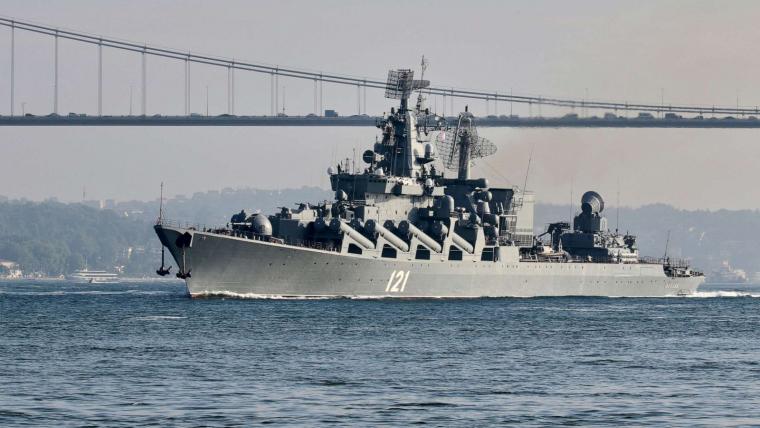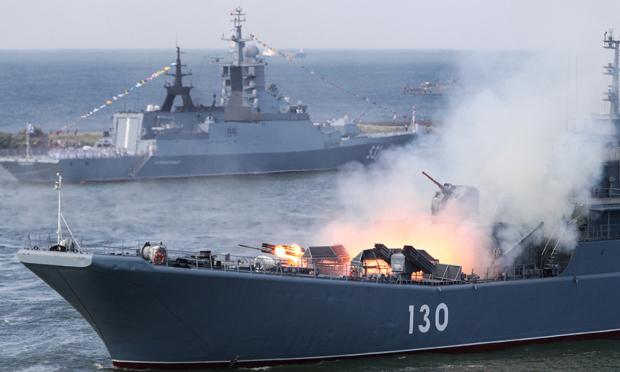With Finland joining NATO in April and Sweden soon to follow, the Baltic Sea is again on the brink of a major geopolitical upheaval.
Western "think tanks" and generals have long been pushing to turn the Baltic Sea into a "NATO lake" to deter potential Russian aggression and target Moscow's geographically distinct enclave of Kaliningrad between Poland and Lithuania.
The Baltic and Black Seas share a geographical characteristic: both have only a small entrance to the world's oceans.
In the Baltic, three straits separate Denmark from Sweden, with the widest between two Danish islands being just 16 kilometres wide.
Ships seeking to leave the Black Sea to enter the Mediterranean must navigate the Bosphorus and the Dardanelles straits, both of which are entirely within the territorial waters of NATO-member Turkey.

It is not clear whether NATO's strategy is to create a permanent pressure point in Russia's northwest to tie up its resources and prevent it from using its full military capacity in the event of war.
But the way the military dynamics are unfolding elsewhere around Ukraine suggests such thinking.
According to a RuMoD press release, the Stoikiy corvette carried out a series of planned practice firings, using the Redut vertical launch system, on surface and air targets in the Fleet's maritime training zone and sank a target vessel.
The Redut Surface-to-Air (SAM) is the naval version of the S-350 Vityaz (AD) medium-range air defense system. In this case, it appears to have been modified for surface attack roles, as Russia has done several times with the S-300.
The exercise also included shooting down a special airborne target that simulates a small aerodynamic maneuvering target.
The shot was conducted in a complex interference environment with simulated electronic countermeasures, suggesting a collision with an adversary (NATO) whose naval forces would try to disrupt communications and Russian radars.
Whether this exercise was part of the Baltic Sea Fleet's Ocean Shield 2023 exercises announced on August 2 is unclear. RuMoD said that, the exercise involved 30 warships and vessels, 20 support ships, 30 naval aircraft and about 6,000 troops.
The objectives were to protect maritime communications, transport troops and military cargo, and defend the coastline.
Interestingly, Russia's latest exercises took place immediately after the end of the NATO exercise on the North Coast, after the start on 9 September. This exercise featured troops from all NATO countries in the Baltic Sea, as well as Sweden, which will soon become a member, and non-Baltic allies the US, Canada, the Netherlands, Belgium and France.
In October 2022, the Hudson Institute called on the US to work with its NATO allies to develop a strategy that addresses Russian anti-access/area denial (A2/AD) capabilities in Kaliningrad in the event of a conflict.
In particular, this effort requires close cooperation and planning with Poland. NATO cannot carry out any credible defense of the Baltic region without neutralizing the threat from Kaliningrad.
Kaliningrad is the cornerstone of Russia's anti-access/area denial (A2/AD) strategy in the Baltic Sea region. If Russia has control of Kaliningrad during an armed conflict, NATO's ability to operate in the Baltic Sea region will be limited.
From Russia's perspective, this may appear as a pre-emptive threat to Kaliningrad and its air supply routes from the land to the enclave envisioned by NATO. Therefore, it requires such aggressive missile launching exercises.
Hence, it conducts exhaustive live-fire exercises practiced in defending the enclave. An exercise in early April included close air support (CAS), ground attack, aerial bombardment and maneuvering by infantry fighting vehicles (IFVs) and Baltic Sea Fleet ships.



